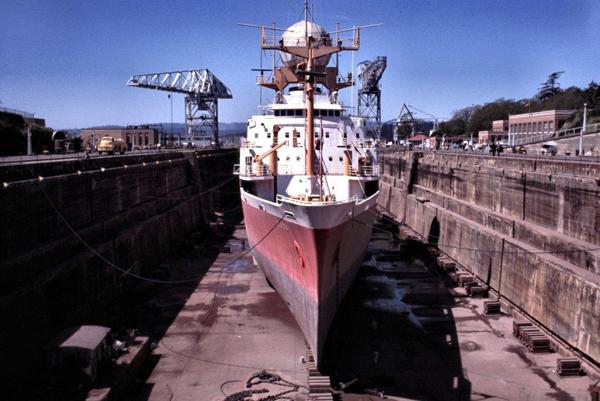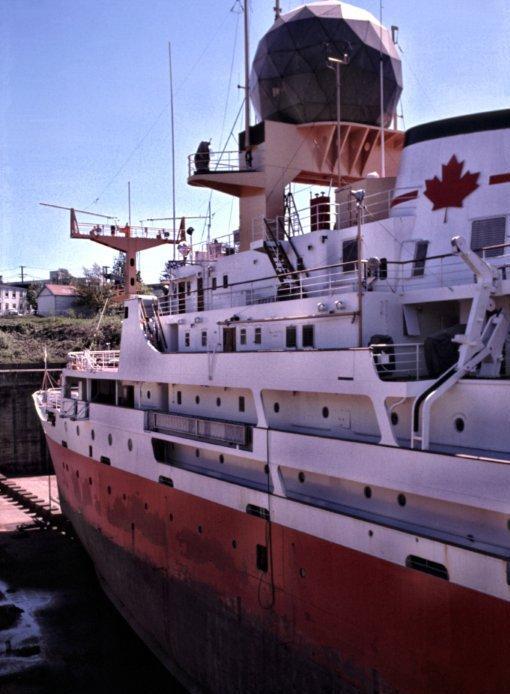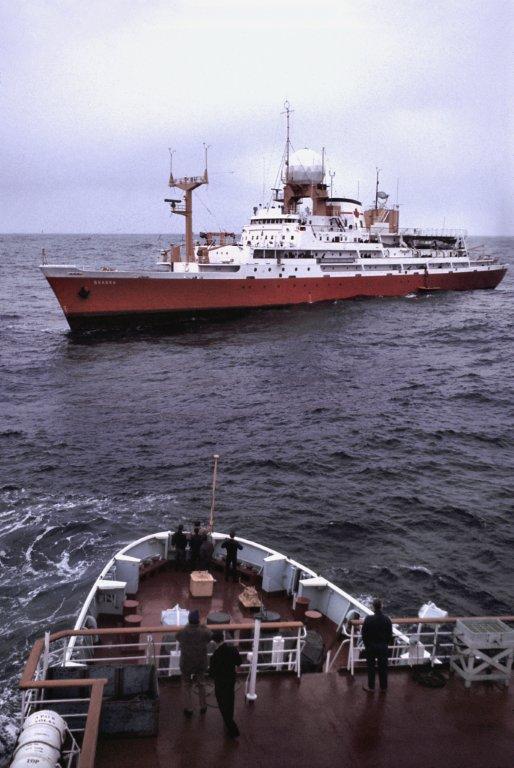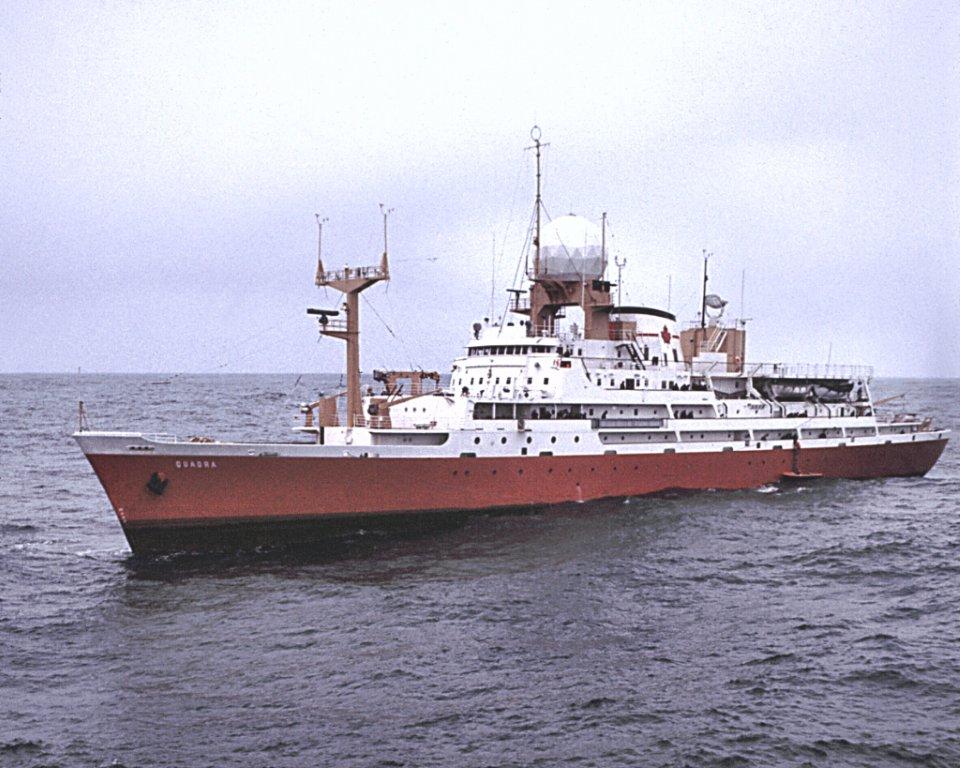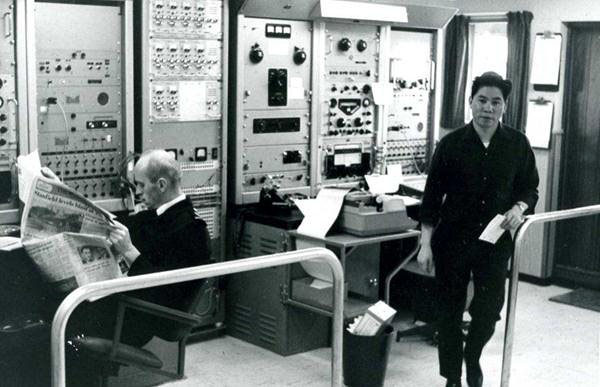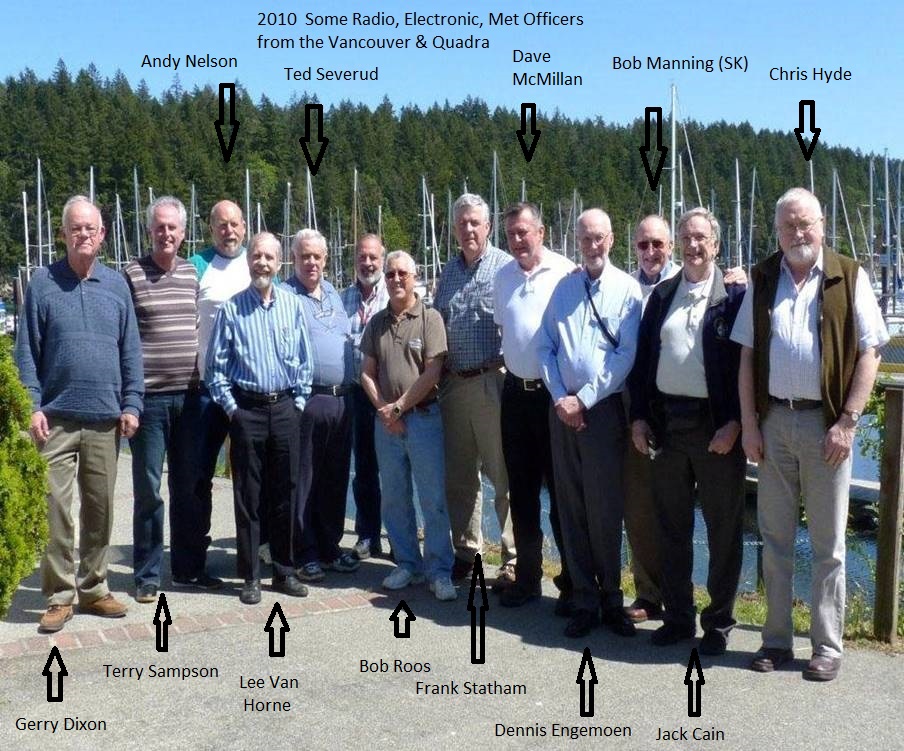"As a “Brit”, I was lucky enough to serve as oceanographer
on CCGS QUADRA in the early 1970s. I had the opportunity to go to Ocean
Station Papa on short notice and took all of 5 seconds to decide.
It was quite a trek to get from the UK, across Canada to Vancouver,
hop across to Victoria and then to Esquimalt.I boarded QUADRA and almost
straight away went out into a North Pacific storm in early January. Three
days out and a Japanese freighter sank with 42 on board. Nothing was found
other than one life ring which was returned to Esquimalt.
Then followed one of the best experiences I have ever had, once accustomed
to the “choppy” sea. The thought of 4.2 km of water underneath the keel
was quite sobering. The crew were very welcoming. I enjoyed the extraordinary
meals, the card schools and the weekly films. The baked Black Alaskan cod
and chips were very tasty. Cheese Whiz and meringue pies were also
favourites.
The ship took quite a battering and turning at the end of the grid was
pretty scary with the ship taking on some alarming angles. I remember still
rolling around after we returned to land at the end of February. The Captain
was interested in very deep sea trawling. On calmer days, he would drop
a net and sample container as far as it would go and see what came back.
Most of the catch was dead owing to the pressure difference, but I do remember
a Fang-toothed Viper fish being brought up. Some of the crew would put
hand lines down in the spare time. The salmon which were caught were either
chum, sockeye or coho.
Some of the work involved sending down sampling gear as far as it would
go and the release weight called a "messenger". It could take 20
minutes or so to drop down the wire from the surface. Migrating birds used
to home in on the ship’s lights, but sadly, many got washed off the decks.
There was also a tsunami warning during the trip which led to everything
being battened down. What did strike me on clear nights was the huge number
of stars visible. The seas were enormous, and the ship took a beating.I
remember seeing one of the crew going round the superstructure on the way
home, marking up all the new cracks with a yellow crayon.
One of the crew members, Chris, put me up for a few days in the city
of Vancouver and gave me the opportunity to look around and go over to
Seattle. Instead of returning from Vancouver directly to Heathrow, I swapped
part of the air ticket for a train ticket as far as Calgary. The winter
scenes through the Rockies were spectacular. Calgary was blisteringly cold
and I had a one and only sauna to warm up.
I am very proud to have been on one of your vessels and to have the
chance to meet some really nice Canadians.
As this year (2022) marks my 50th anniversary of the trip, I
have been looking around for a memento and have a ball cap and CCG cap
badge on order from a Canadian supplier. I will wear with pride.
Funny enough, this year (2022) is the 200th anniversary of the founding
of the British Coast Guard, from being started as a crude rescue service
and anti-smuggling organization through to what they do now, coordinating
rescues and helping police the English Channel with the almost daily traffic
of illegal immigrants crossing from France. It’s probably not on the same
scale as the US and Canadian CG, but you have an awful lot more coast to
guard.
Reading material on board QUATRA was limited. You had your choice of
National Geographic or Playboy. QUATRA was also a "wet" ship (alcohol
permitted) whereas CCG S Vancouver was "wet" but only for the upper
deck. Why ? Vancouver's Captain was a retired Royal Navy Captain. Randy
Dykes of the Quadra wasn’t.
There can’t be many Brits who had such an experience".
Terry Sampson adds the following about QUADRA being a "wet" ship. "Before
we went on the 1974 Gate voyage, the Chief Purser Dick Hughes suggested
that we should increase the liquor drinks because of all the guests that
would be visiting the ship while in Dakar, Senegal. The price was increased
from 20 cents to 25 cents for a 1.5 oz drink. The Quadra was the most popular
bar in Dakar. Every night the Quadra lounge was full of Russian, Americans,
British, French, etc visitors. After the Russians got a few drinks under
their belts, they would start singing. They asked us to sing some Canadian
songs. We only knew the first verse of Alouette, Gentille Alouette. That
was okay because the Russians finished the song".
